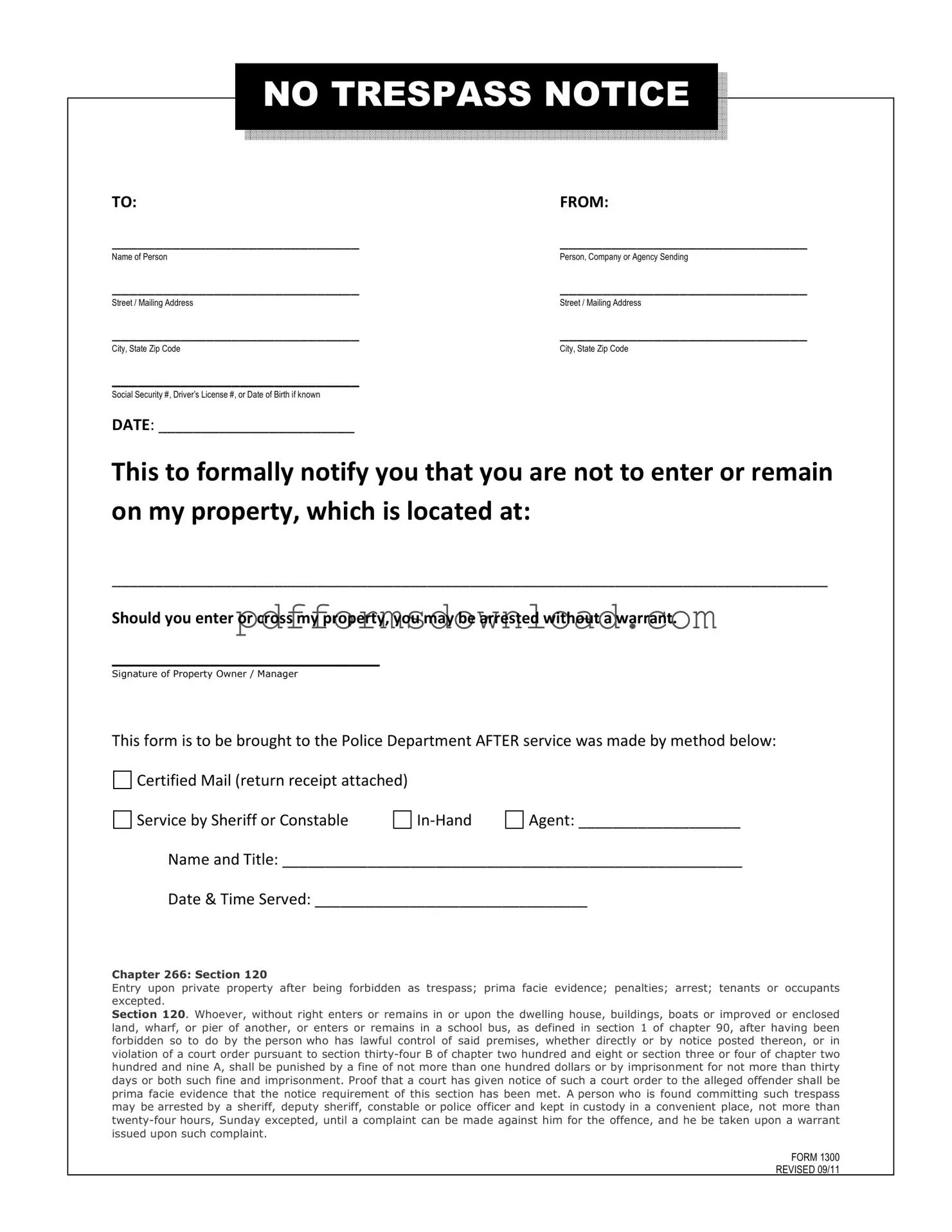What is a No Trespassing Letter?
A No Trespassing Letter is a formal document that notifies individuals that they are not allowed to enter or remain on a specific property. This letter serves as a clear communication of the property owner's wishes and can provide legal backing should an unauthorized person choose to disregard the request. By issuing this letter, property owners can establish boundaries and protect their rights, ensuring that their property remains private and secure.
How do I properly fill out a No Trespassing Letter?
To fill out a No Trespassing Letter, start by clearly identifying yourself as the property owner. Include your name and address at the top of the letter. Next, specify the name of the individual you are addressing. Clearly state the location of your property to eliminate any confusion. Be sure to include a date, and provide instructions on how the letter should be served, such as through certified mail or by a sheriff. Finally, sign the document to validate it. The more detailed and clear your letter is, the more effective it will be in communicating your intent.
What should I do if someone ignores the No Trespassing Letter?
If someone ignores the No Trespassing Letter and continues to enter or remain on your property, you have the right to take further action. First, document any instances of trespassing, including dates and times. You can then contact local law enforcement to report the trespassing. The letter can be presented to the police as evidence of your request for the individual to stay off your property. In some cases, law enforcement may take immediate action, such as issuing a warning or making an arrest, depending on the situation and local laws.
Can a No Trespassing Letter be used in court?
Yes, a No Trespassing Letter can be used in court as evidence of your intent to keep individuals off your property. If a trespasser disregards the letter and you decide to pursue legal action, the letter demonstrates that you clearly communicated your boundaries. Courts often view such documentation favorably, as it shows that you took reasonable steps to protect your property rights. However, it's important to note that the effectiveness of the letter may vary based on local laws and the specific circumstances of each case.
